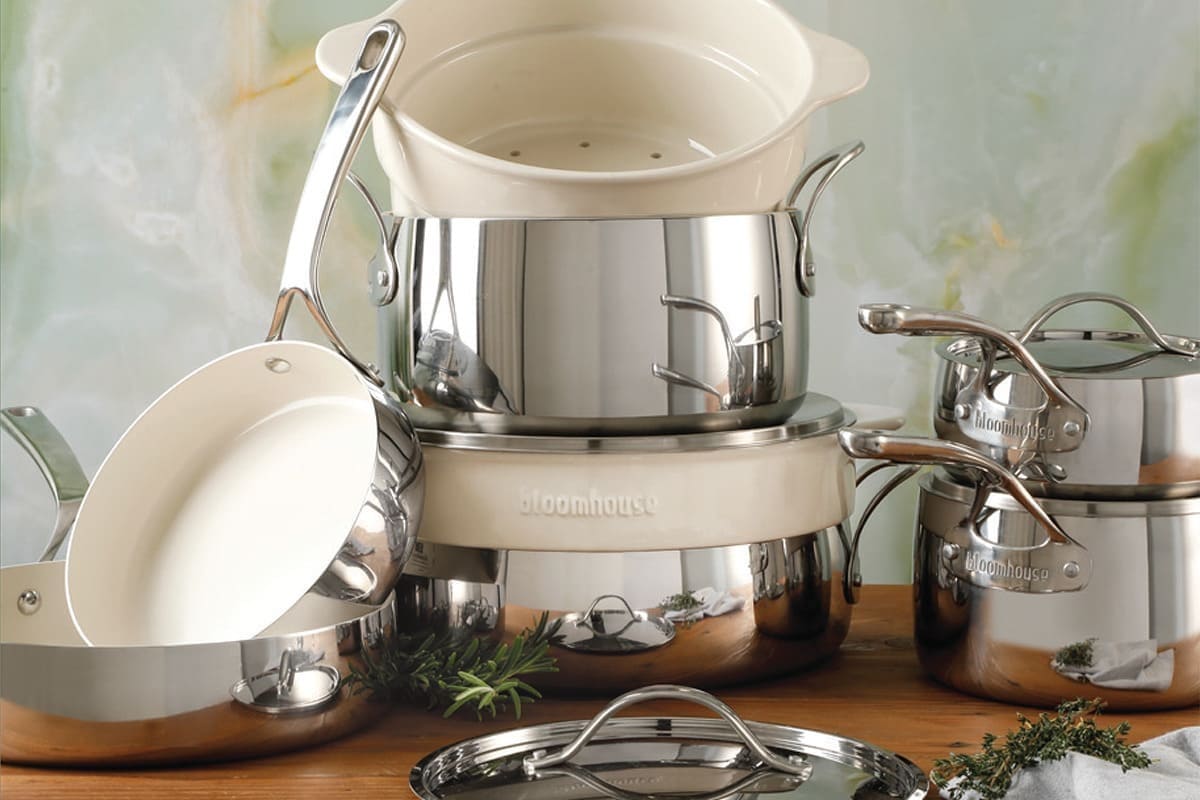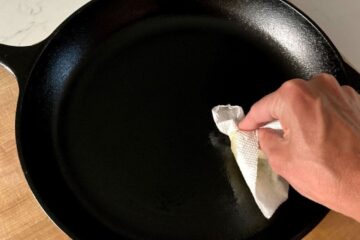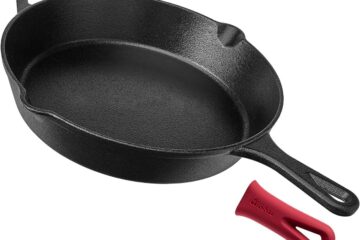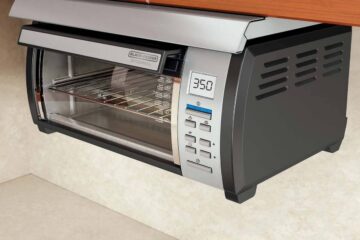Stainless steel cookware is a popular choice for many home chefs. It’s durable, easy to clean, and offers a sleek, modern look in the kitchen. However, one question that often arises is whether stainless steel cookware is nonstick.
The short answer is no, stainless steel cookware is not nonstick. Unlike nonstick cookware, which has a coating that prevents food from sticking, stainless steel cookware relies on its smooth surface and the use of oil or butter to prevent food from sticking. While it may take some practice to get the hang of using stainless steel cookware, many chefs prefer it for its ability to sear and brown foods, as well as its versatility in the kitchen.
What is Stainless Steel Cookware?
Stainless steel cookware is a type of kitchenware made of a metal alloy that contains at least 10.5% chromium. This material is known for its durability, resistance to corrosion, and ability to maintain its shine over time.
Stainless steel cookware is often sold in sets and includes a variety of pots and pans, such as saucepans, frying pans, and stockpots. It can also be found in various shapes and sizes, making it versatile for different cooking needs.
One of the benefits of stainless steel cookware is that it is non-reactive, meaning it does not react with acidic foods like tomatoes or vinegar. This makes it a great choice for cooking a wide range of dishes. Additionally, stainless steel cookware is easy to clean and can be used on a variety of stovetops, including gas, electric, and induction.
However, it’s important to note that stainless steel cookware does not have a nonstick surface. This means that food can stick to the surface if not cooked properly or if the pan is not properly oiled. While stainless steel cookware is a great option for many home cooks, those who prefer nonstick surfaces may want to consider other materials, such as ceramic or Teflon-coated pans.
Is Stainless Steel Cookware Nonstick?
Stainless steel cookware is a popular choice for many home cooks due to its durability, versatility, and ability to distribute heat evenly. However, one question that often arises is whether or not stainless steel cookware is nonstick.
The Short Answer
The short answer is no, stainless steel cookware is not nonstick. Unlike nonstick cookware, which has a special coating that prevents food from sticking to the surface, stainless steel cookware has a smooth, polished surface that is not naturally nonstick.
The Long Answer
While stainless steel cookware is not nonstick, there are ways to prevent food from sticking to the surface. One common method is to preheat the pan and add oil or butter before adding food. This creates a natural nonstick surface that allows food to slide around the pan without sticking.
Another method is to use a technique called “deglazing.” This involves adding liquid to the pan after cooking to loosen any stuck-on bits of food. The liquid can be wine, broth, or even water. The liquid will dissolve the stuck-on bits and create a flavorful sauce that can be poured over the food.
It’s also important to note that some stainless steel cookware is designed to be nonstick. These pans are typically coated with a layer of nonstick material, such as Teflon or ceramic. However, these coatings can wear off over time and may not be as durable as uncoated stainless steel cookware.
Advantages of Stainless Steel Cookware
Stainless steel cookware is a popular choice for many home cooks and professional chefs alike. It offers several advantages over other types of cookware, including durability, heat conductivity, and non-reactivity.
Durability
One of the main advantages of stainless steel cookware is its durability. It is made from a combination of metals, including steel, nickel, and chromium, which makes it resistant to rust and corrosion. This means that it can withstand high temperatures and heavy use without deteriorating or warping.
Stainless steel cookware is also scratch-resistant, which means that it can last for years without showing signs of wear and tear. This makes it a good investment for anyone who wants to buy cookware that will last a long time.
Heat Conductivity
Another advantage of stainless steel cookware is its heat conductivity. Stainless steel is not the best conductor of heat, but it is still able to distribute heat evenly across the surface of the pan. This means that food cooks more evenly and there are no hot spots that can cause food to burn or cook unevenly.
Non-Reactivity
Stainless steel is also non-reactive, which means that it does not react with acidic or alkaline foods. This is important because some types of cookware, such as aluminum, can react with acidic foods and cause them to have a metallic taste. Stainless steel cookware allows the natural flavors of the food to come through without any unwanted metallic flavors.
In addition to these advantages, stainless steel cookware is also easy to clean and maintain. It can be washed in the dishwasher or by hand, and it does not require any special cleaning products or methods.
Disadvantages of Stainless Steel Cookware
Food Sticking
One of the most significant disadvantages of stainless steel cookware is that food can stick to its surface. Unlike non-stick cookware, stainless steel does not have any coating to prevent food from sticking. This can make cooking and cleaning a challenge, especially when cooking delicate foods like eggs or fish. To prevent food from sticking to stainless steel cookware, it is recommended to use oil or fat while cooking.
Price
Another disadvantage of stainless steel cookware is its price. Stainless steel cookware tends to be more expensive compared to other types of cookware. This is because stainless steel is a durable and high-quality material that can last for a long time. However, the cost of stainless steel cookware can vary depending on the brand, size, and quality of the product.
In addition to these two main disadvantages, there are a few other things to keep in mind when using stainless steel cookware. For example, stainless steel is not a great conductor of heat, which means that it can take longer to heat up and cool down compared to other materials like copper or aluminum. This can make cooking more challenging, especially when trying to achieve precise temperature control.
Another thing to keep in mind is that stainless steel can leach heavy metals into food, especially when cooking acidic foods for a long time. Stainless steel contains iron, chromium, and nickel, which can have potential health effects if consumed in large quantities over time. However, this is not a significant concern for most people, and there are ways to minimize the risk of heavy metal leaching, such as avoiding cooking acidic foods for extended periods in stainless steel cookware.
How to Cook with Stainless Steel Cookware?
Stainless steel cookware is a popular choice for many home cooks due to its durability, versatility, and aesthetic appeal. However, cooking with stainless steel can be tricky, especially if you’re used to nonstick cookware. In this section, we’ll go over some tips and techniques to help you get the most out of your stainless steel cookware.
Preheating the Pan
Preheating your stainless steel pan is crucial for achieving optimal cooking results. To preheat your pan, place it on the stove over medium-high heat for a few minutes until it’s hot. You can test the temperature by sprinkling a few drops of water on the surface of the pan. If the water sizzles and evaporates immediately, the pan is ready for cooking.
Using the Right Oil
Using the right oil is important when cooking with stainless steel. Avoid using butter or margarine, as they have a low smoke point and can burn easily. Instead, use oils with a high smoke point, such as vegetable, canola, or grapeseed oil. These oils can withstand high temperatures without burning or smoking, which can ruin the flavor of your food.
Cooking Techniques
When cooking with stainless steel, it’s important to use the right techniques to prevent food from sticking to the pan. Here are some tips to help you cook like a pro:
- Use a spatula to flip food instead of a fork, which can scratch the surface of the pan.
- Don’t overcrowd the pan, as this can cause food to steam instead of sear.
- Allow food to cook for a few minutes before flipping or stirring, as this will help it release from the pan.
- If food does stick to the pan, deglaze it with a liquid such as wine or broth to loosen the bits and create a flavorful sauce.
With these tips and techniques, you can cook with confidence and get the most out of your stainless steel cookware.
Cleaning and Maintenance of Stainless Steel Cookware
Stainless steel cookware is a popular choice for many home cooks due to its durability and versatility. However, proper cleaning and maintenance are crucial to keep your stainless steel cookware in good condition and ensure it lasts for years to come.
Cleaning Tips
When it comes to cleaning stainless steel cookware, it’s important to avoid using abrasive cleaners or scrubbers that can scratch the surface. Instead, opt for gentle cleaning solutions and tools, such as:
- Mild dish soap and warm water
- White vinegar and water solution
- Baking soda paste
To clean burnt-on food or stains, fill the pan with water and bring it to a boil. Then, add a tablespoon of baking soda and let it simmer for a few minutes before scrubbing with a non-abrasive sponge or brush.
Avoid using steel wool or harsh chemicals, as these can damage the surface of your stainless steel cookware and affect its nonstick properties.
Maintenance Tips
In addition to regular cleaning, there are a few maintenance tips to keep in mind when it comes to stainless steel cookware:
- Avoid using high heat settings, as this can cause discoloration and damage to the surface.
- Use wooden or silicone utensils to prevent scratching and damage.
- Avoid stacking your stainless steel cookware to prevent scratches and dents.
- Store your cookware in a dry, cool place to prevent rust or corrosion.
Conclusion
In conclusion, stainless steel cookware is not inherently nonstick. While it does have many desirable qualities such as durability, resistance to staining and corrosion, and the ability to withstand high temperatures, it does not possess the same nonstick properties as coatings like Teflon. Stainless steel cookware can still be used to cook a wide variety of foods, but it may require the use of additional fats or oils to prevent sticking. It is important to properly preheat the stainless steel cookware and use proper cooking techniques to minimize sticking and achieve desired cooking results.



